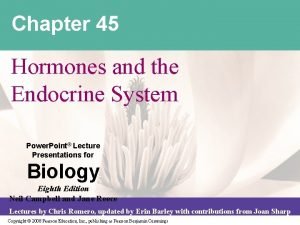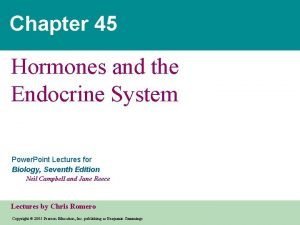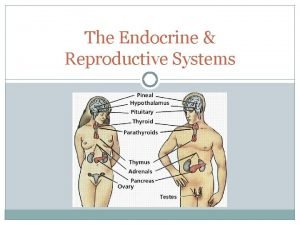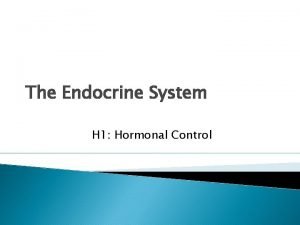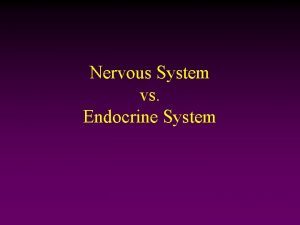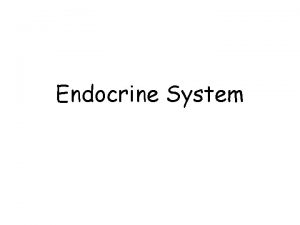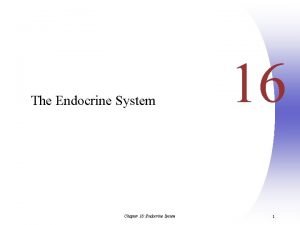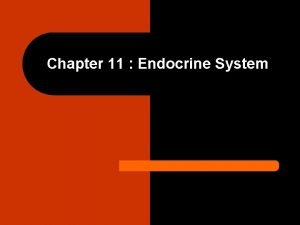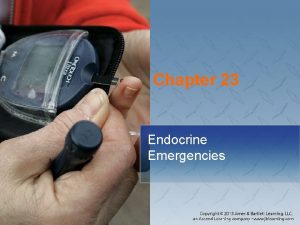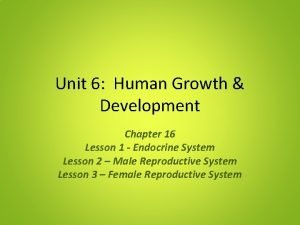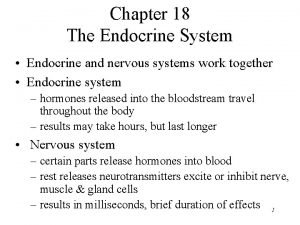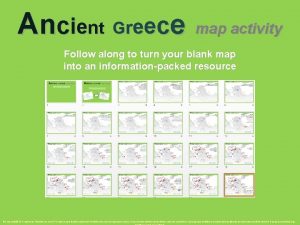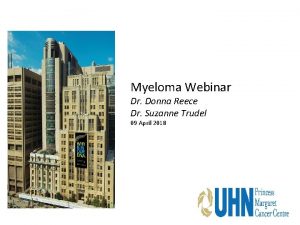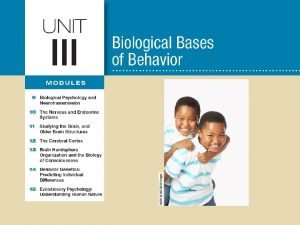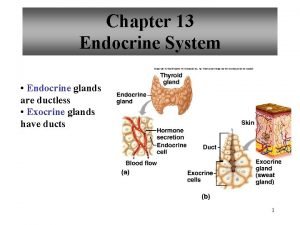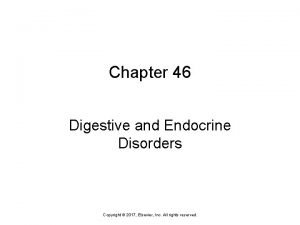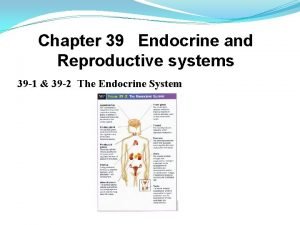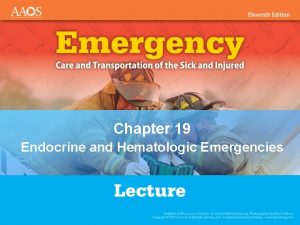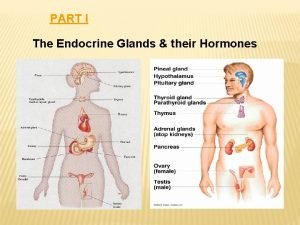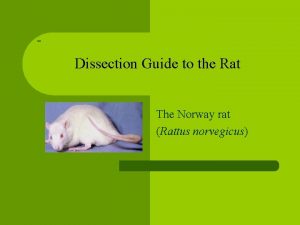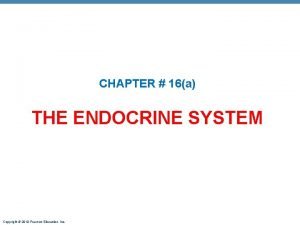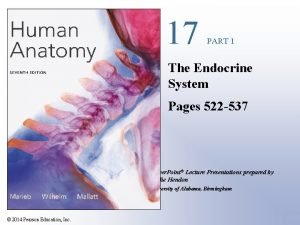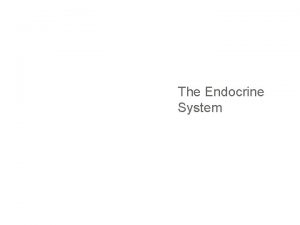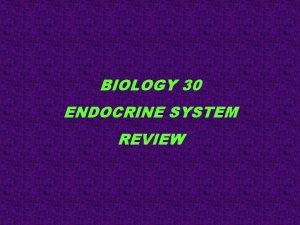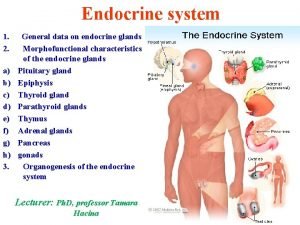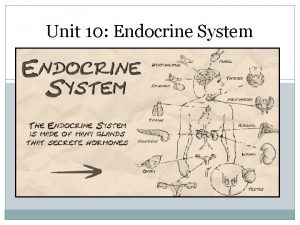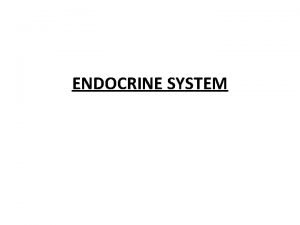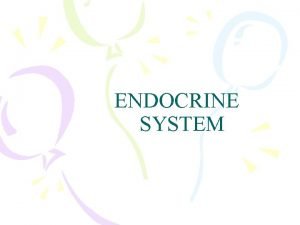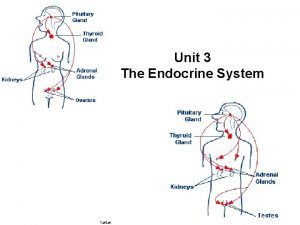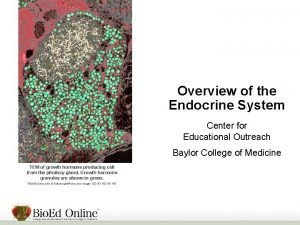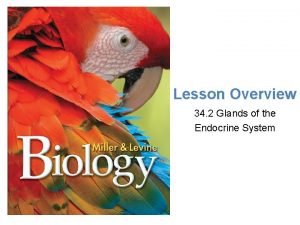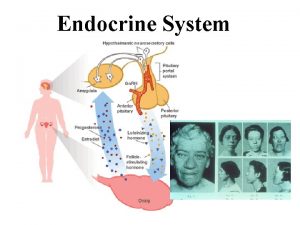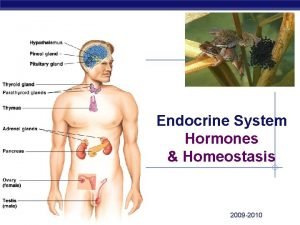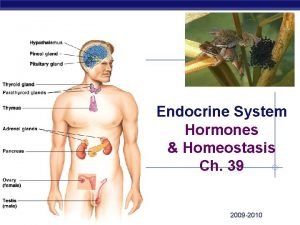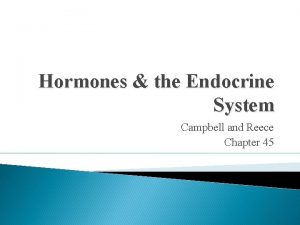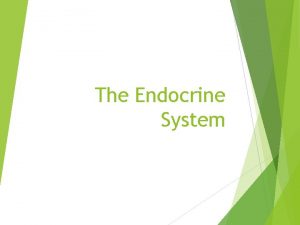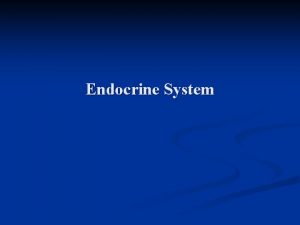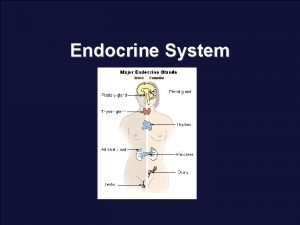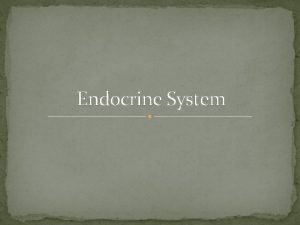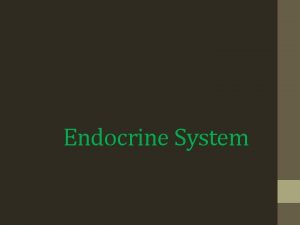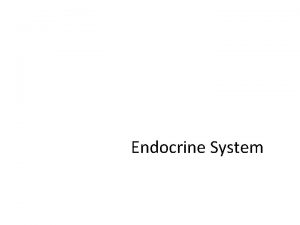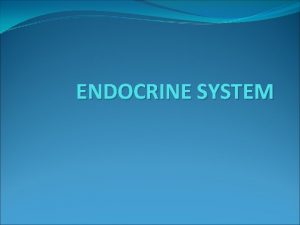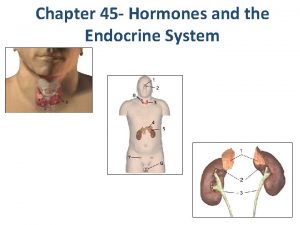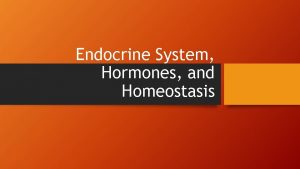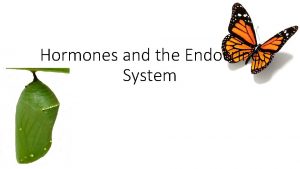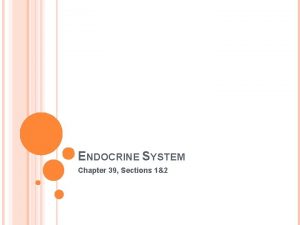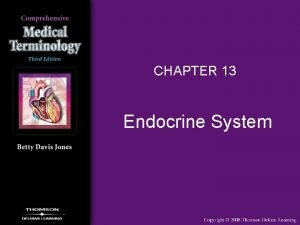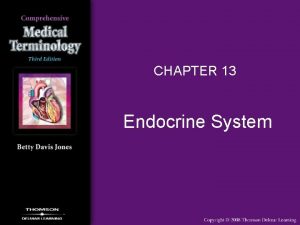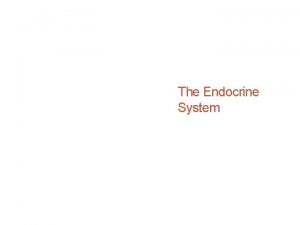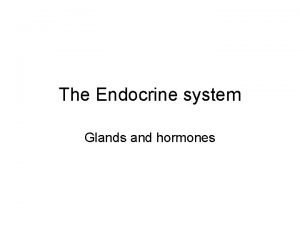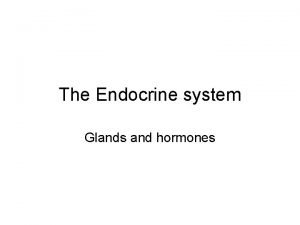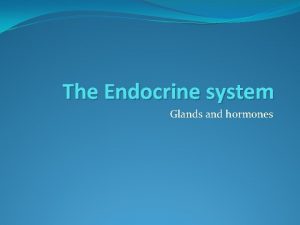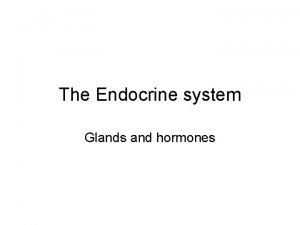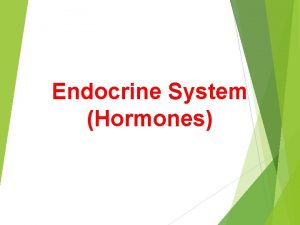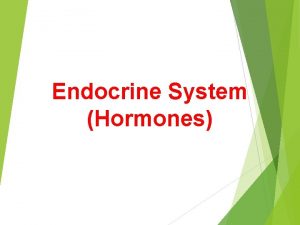Hormones the Endocrine System Campbell and Reece Chapter

Hormones & the Endocrine System Campbell and Reece Chapter 45




Hormones � body‘s long-distance regulators � molecules secreted into ECF circulate thru body communicate regulatory messages thru out body � in animals that undergo metamorphosis hormones stimulate growth of adult cells & apoptosis of larval cells

Endocrine System � with nervous system in charge of communication & regulation thru out body

� rapid response � neurotransimitters � short distances � regulate neurons, muscle, glands, endocrine cells (area of overlap) Nervous System � slower response � hormones � short or long distances � regulate functions of most organ systems Endocrine System

Intercellular Communication � signaling processes in animals: � classified by 2 criteria: 1. type of secreting cell 2. route signal takes to reach target

Endocrine Signaling � hormones ECF bloodstream target cells � functions: 1. 2. 3. maintain homeostasis mediate responses to environmental stimuli regulates growth & development


Local Regulators � molecules that act over short distances � reach target solely by diffusion ◦ ex: cytokines released by T helper cells � 2 1. 2. types: paracrine autocrine


animation � http: //sites. sinauer. com/cooper 5 e/animation 1501. ht ml

Pheromones, an Exception � not all secreted molecules act w/in body � method of communication between members of some animal species ◦ ex: 1. foraging ant locates new food source marks its path back to nest with pheromones 2. define boundaries of territory 3. attract mates: female giant silk moth releases pheromone that can attracgt a male up to 4. 5 km away

Endocrine Glands � ductless organs � secrete hormones directly into surrounding fluid

3 Chemical Classes of Hormones 1. 2. 3. Polypeptide Steroid Amines


Cellular Response Pathways � secreted by exocytosis � travel thru blood � bind to cell-surface signal receptors induces changes in cytoplasmic molecules might alter gene transcription (signal transduction) Water-Soluble � diffuse out of endocrine cell bind to transport molecules in blood diffuse into target cells bind to intracellular receptors trigger gene transcription Lipid-Soluble


Cell-surface hormone receptors trigger signal transduction

Steroid hormone receptors directly regulate gene expression

Multiple Effects of Hormones � effects hormone has can vary if target cells differ in molecules that receive or produce the response to the hormone

Signaling by Local Regulators � pathways by which local regulators trigger responses same as those activated by hormones � growth factors ◦ stimulate cell proliferation & differentiation � NO (nitric oxide) ◦ synthesized & released by endothelial cell when O 2 levels low activates enzyme in smooth muscle vasodilation increased blood flow � prostaglendins: ◦ aggregation of platelets blood clotting ◦ promote fever & inflammation in immune system ◦ smooth muscle contraction

Coordination of Neural & Endocrine Signaling � occurs in all but simplest invertebrates


Simple Hormone Pathways

Simple Neuroendocrine Pathway

Feedback Loop Regulations � stimulus initiates a response that will reduce the effect of the stimulus Negative Feedback � stimulus initiates a response that reinforces the stimulus Positive Feedback


Target Tissues of Insulin � Insulin lowers blood glucose levels by: ◦ stimulating nearly all cells *outside the brain to take up glucose ◦ slowing glycogen breakdown in liver ◦ inhibiting glycerol (from fats) & a. a. glucose aka gluconeogenesis � *brain cells do not require insulin to take up glucose

Target Tissues of Glucagon � Glucagon influences blood glucose levels mainly thru it effects on target cells in liver � when serum glucose levels < normal (70 – 110 mg/100 m. L) glucagon signals liver cells to release glucose blood by: 1. increase glycogen hydrolysis 2. convert a. a. & glycerol glucose

Diabetes Mellitus � deficiency of insulin in target tissues � hi blood glucose levels but cannot get into cells so cells use fat as main substrate for cellular respiration � acidic metabolites form during fat breakdown ketoacidosis ◦ low p. H can be life threatening ◦ Na+ & K+ ions depleted


Type II Diabetes: Insulin Resistance � characterized by failure of target cells to take up insulin from blood elevated blood glucose � 7 th most common cause of death in USA � contributing factors: ◦ genetics (defect in insulin receptor or insulin response pathway) ◦ obesity ◦ age (though more children being diagnosed) ◦ sedentary lifestyle


Coordination of Endocrine & Nervous Systems in Vertebrates � Hypothalamus ◦ plays central role in integrating endocrine & nervous systems ◦ receives info initiates endocrine signaling appropriate to environmental conditions ◦ sends releasing hormones to anterior pituitary gland sends tropic hormones to target glands ◦ sends hormones it makes to posterior pituitary


Posterior Pituitary Hormones ADH: antidiuretic hormone (vasopressin) 1. ◦ ◦ 1 of several hormones that act on kidneys increases water retention in kidneys (decreases urine vol/ increases blood plasma vol : maintains blood osmolarity wnl Oxytocin 2. ◦ ◦ increases strength on uterine contractions in labor regulates milk secretion by mammary glands


Anterior Pituitary Hormones

Evolution of Thyroid Function � over time functions of a hormone have diverged from species to species � ex: thyroxine (thyroid hormone) regulates metabolism in most animal but in frogs it function to resorb tadpole tail � Prolactin: in mammals develops mammary glands & milk production but in birds: regulates fat metabolism & reproduction; in amphibians: delays metamorphosis; in fish

Prolactin Functions � Animal � Mammals �` � Birds � Amphibians � Fish �` � Function develops mammary glands & milk synthesis regulates fat metabolism delays metamorphosis regulates salt & water balance

Tropic Hormones (not GH or. MSH)

Nontropic Hormones of Anterior Pituitary: GH

- Slides: 45
